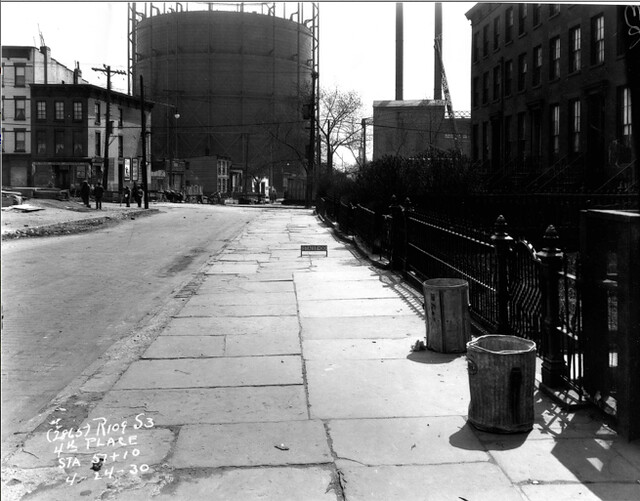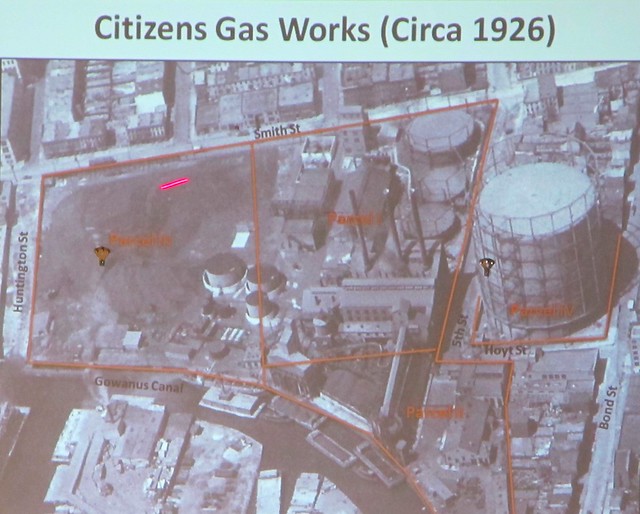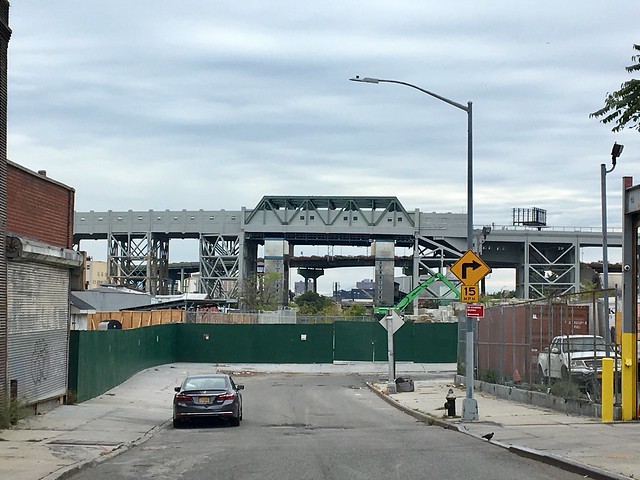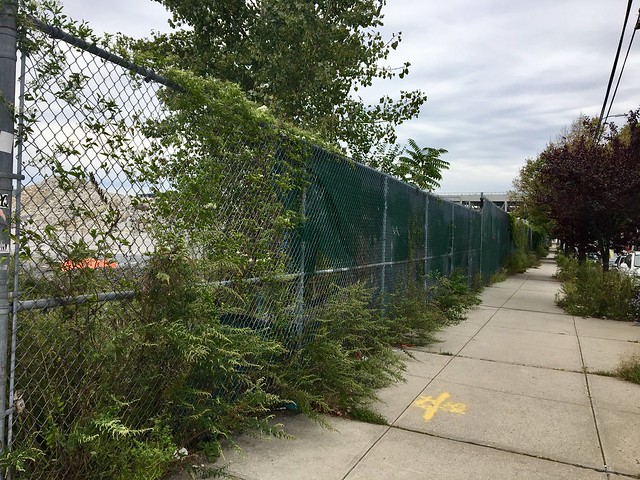2008 Hudson Company rendering for Gowanus Green
Brownfield of Dreams: A Film By Matt Sollars from 2008
Dear Carroll Gardens and Gowanus Residents.
Tomorrow evening, the NYC Department of Housing Preservation and Development is hosting a
Tomorrow evening, the NYC Department of Housing Preservation and Development is hosting a
a Community Workshop on Public Place, the City-owned six acre Brownfield site along Smith Street and 5th Street.
You may remember that in 2008, Hudson Companies, Jonathan Rose, Fifth Avenue Committee, and the Bluestone Organization were selected to develop the site for affordable housing with retail space, community facilities and open space. Their proposal was named 'Gowanus Green' and included 774 units of housing. To move forward, the site needed to go through a rezoning from manufacturing to residential, which never moved forward after the Environmental Protection Agency declared the Gowanus Canal a Superfund Site.
However, the NYC Department of City Planning has now wrapped Public Place into the framework of the agency's Gowanus Neighborhood Planning Study. The rezoning is likely going to move forward later this year as it moves through the Uniform Land Use Process (ULURP).
Why is this of importance to local residents?
To this day, Public Place remains one of the most polluted sites along the Gowanus Canal and needs extensive remediation.
Here is a brief history of the site.
From the 1860s to the early 1960s, the Public Place site was the home of the former Citizens Gas Light Company's 12th Ward Gas Work Plant, where coal and petroleum products were turned into flammable gas. The gas was used for cooking, lighting, heating and commercial purposes in the surrounding neighborhoods.
Unfortunately, one of the by-products of this gasification process is coal tar, a black viscous liquid, which is harmful to the environment. At Public Place, coal tar has been found at depths of 150 feet.
When the Citizens Gas Works plant was decommissioned in the 60s, the site was given to the city 'by condemnation' as public land in 1975. Hence the name "Public Place". Citizens Gas Light Company later sold to Brooklyn Union Gas, which became Keyspan, which is now National Grid.
The responsibility for the clean-up falls on National Grid. The work will be done under the supervision of NYS Department of Environmental Conservation.
Since some of the coal tar has been found to ooze from the site into the Gowanus Canal, the US Environmental Protection Agency, which declared the canal a Superfund site in 2010, is also involved.
Unfortunately, one of the by-products of this gasification process is coal tar, a black viscous liquid, which is harmful to the environment. At Public Place, coal tar has been found at depths of 150 feet.
When the Citizens Gas Works plant was decommissioned in the 60s, the site was given to the city 'by condemnation' as public land in 1975. Hence the name "Public Place". Citizens Gas Light Company later sold to Brooklyn Union Gas, which became Keyspan, which is now National Grid.
The responsibility for the clean-up falls on National Grid. The work will be done under the supervision of NYS Department of Environmental Conservation.
Since some of the coal tar has been found to ooze from the site into the Gowanus Canal, the US Environmental Protection Agency, which declared the canal a Superfund site in 2010, is also involved.
One has to wonder how prudent and realistic it is to build housing on such historically polluted land. One also has to have a health dose of skepticism that the site will ever be safe for human habitation.
None of this seems to be a deterrent for Councilman Brad Lander, who has been a proponent of the project because of it will include affordable housing. (Take a look at the video by Matt Sollars from 2008, featuring an interview with Lander.
Please take time to attend tomorrow evening's meeting and get involved in this issue.
Let us make sure that we build SAFE affordable housing, and don't put people in harm's way.
Community Workshop on Public Place
Share your input and update the vision for Public Place!
Thursday, November 1, 2018
6:00 pm - 8:00 pm
P.S. 32, 317 Hoyt St. at Union St.














.JPG)

8 comments:
How is it our business how other people choose to live? Are we a neighborhood of public advocates?
I'm ashamed that it's only 770 units on such a HUGE site. We need to do better as a society if we ever want to combat climate change.
Thank you for letting me know about the progress of this. It seems if they built along a pollluted canal and people moved in, they can very well do it again. Just like parts of Williamsburg. 770 units of housing ok. Well. Why not just build a soccer field? This project needs to be halted. Build somehere safer.
Cleanup has been underway for months - mostly demolition & abatement for lead, asbestos and other contaminant removal. Hopefully, tonight we will learn why the City has not given any community notice of the ongoing remediation work.
Building a massive apartment complex on a waterway notorious for flooding and carcinogens in not a good way to battle climate change (to anonymous 3:51)
Yes, it would be nice to know why we haven't heard anything about current clean-up at the old cement factory and the rest of Public Place.
5th Street adjacent to Public Place has become a disgusting dumping ground--filled with old tires, tv's large contractor bags etc. Sanitation does nothing nor do parking enforcement officers (they rarely walk down 5th Street to ticket and never by the old cement plant. There was a car parked there for almost 5 months with NO tickets on it!
High-rise housing on toxic land at the lower floors and the subway zipping by outside your windows on the upper-floors!
Where does Landers get these "big" ideas?
But on the the real question: how much career-building financial donations will Landers get for promoting this site for housing?
Aside from the obvious concerns about the safety of building on a toxic waste site, what about the issue of bringing more people into an area that lacks the infrastructure to support them. How many more people can we stuff onto the F train every day? Where will people shop and park?
Aside from the obvious concerns about the safety of building on a toxic waste site, what about the issue of bringing more people into an area that lacks the infrastructure to support them. How many more people can we stuff onto the F train every day? Where will people shop and park?
I once attended a tour of Public Place site. This site will never be fully clean. A complicated system of all kinds of barriers in the soil, along the canal, to try to abate pollution and contamination, and recontamination, of soil, of water. Fact is that any housing built on this can only be for renters, because the site has to be under surveillance for recontamination despite the complex remediation program. Just because it's land does not make it viable for housing. Who is really benefitting from this?
Post a Comment